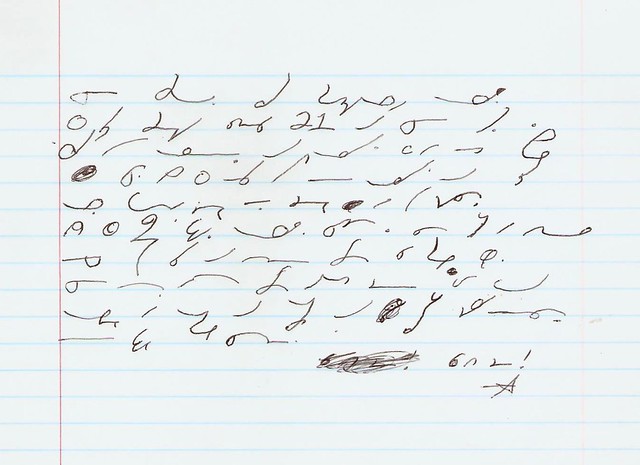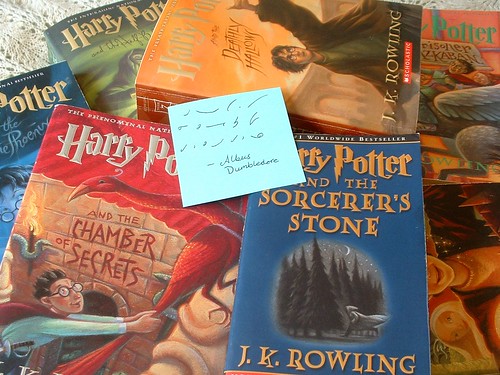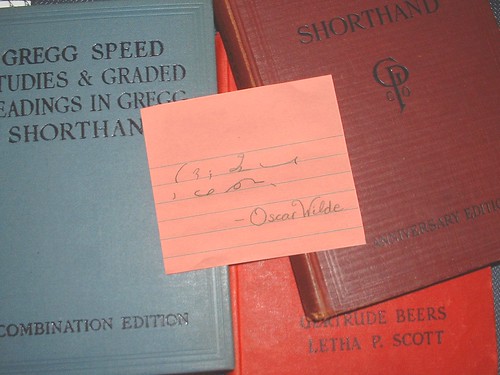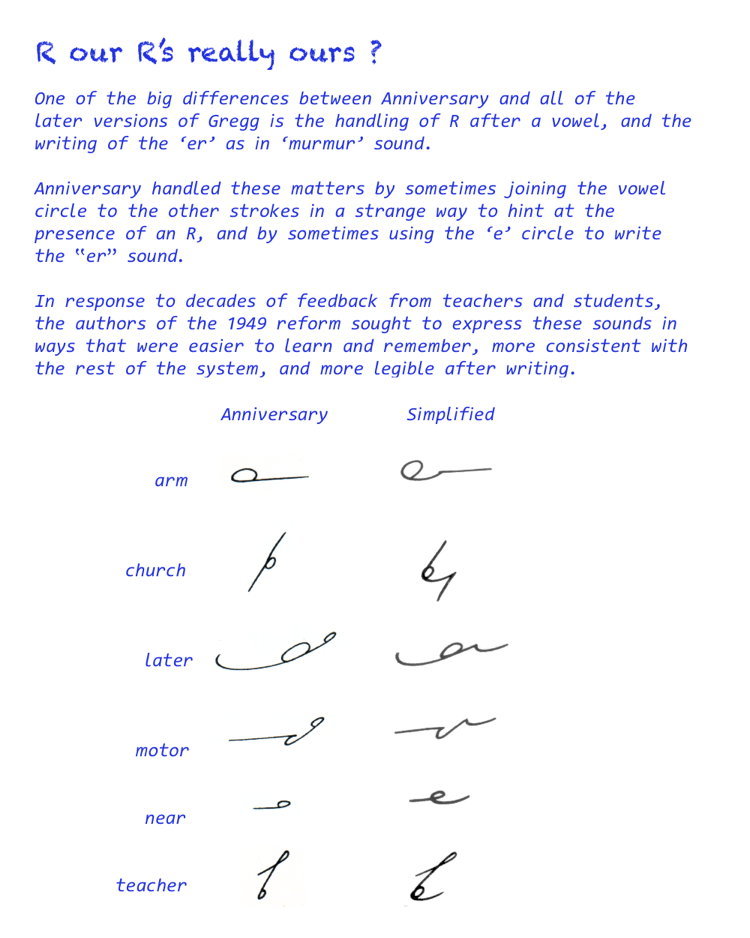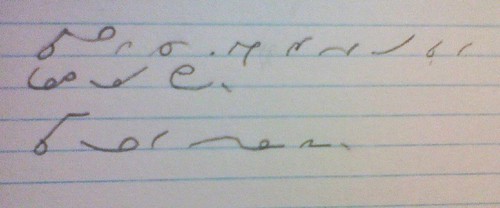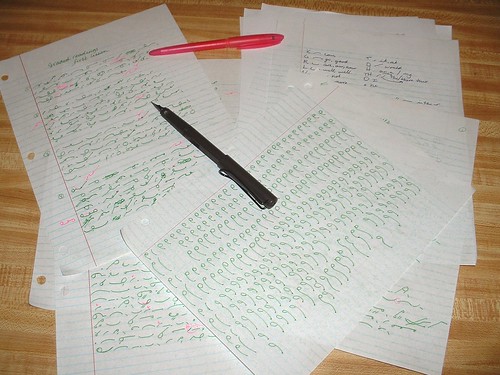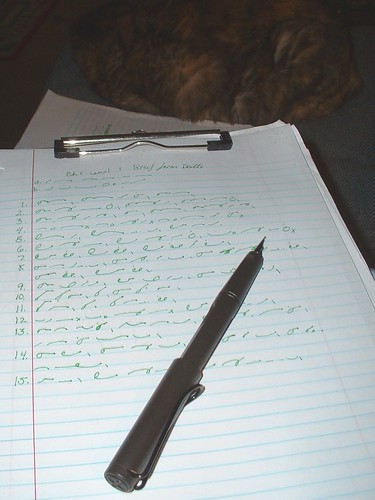(warning this post uses a bit of
IPA)
I just finished up
Unit 8, where we are
introduced to the special "R" rules.
Unit 8 is only
concerned with the "ur/ir/er/ar" sound in relation to the
beginning or ending of a straight stroke. For the rest of the
Anniversary's method of expressing "R" I'll need to wait
until
Unit 20.
R is weird - In America, some people
say it is a vowel, but that isn't quite right. R is a bully,
specifically R doesn't like
shwas (ə). To quote one of the phonics
books that I used to teach my son to read: when R comes after an I, E
or U it likes to squish it down so far that you can hardly hear it at
all - all you can hear is
"er"(ɚ) (note: "ar"
is really
"ɑ" plus
"ɚ")
So in Anniversary Gregg,
R colored
shwas are expressed by reversing the circle.*
Like the graphic above states, this
special method (reversing the circle) is unique to Anniversary, In
simplified and later editions, they just write the R out. I don't
have the simplified manual, so I don't know exactly how the rule is
stated, and I'm not quite sure why they decided to change it. (Ok, I
actually do have an idea: This special rule is one more thing to
memorize, and [looking ahead to
unit 20] it can probably be a bit
difficult to write smoothly without a lot of drilling practice. And
it may be a bit more difficult to read fluently.) But it is
definitely something to keep in mind when reading old found shorthand
notes, or when choosing a method to learn.
On a personal note I usually prefer the way the Anniversary reversed circle words look, but there are a handful of Simplified versions that I think look nicer. Maybe once I'm all done with Anniversary I'll get a Simplified manual and I'll blend the two versions for a more pleasing to my eye hybrid.
*
There are exceptions when it would be
impossible or really hard to write quickly, like "air"
And since Gregg isn't really a wholly
phonetic system, sometimes the rules are bent a bit to to make other
words that don't quite fit that description easier/quicker to write.
